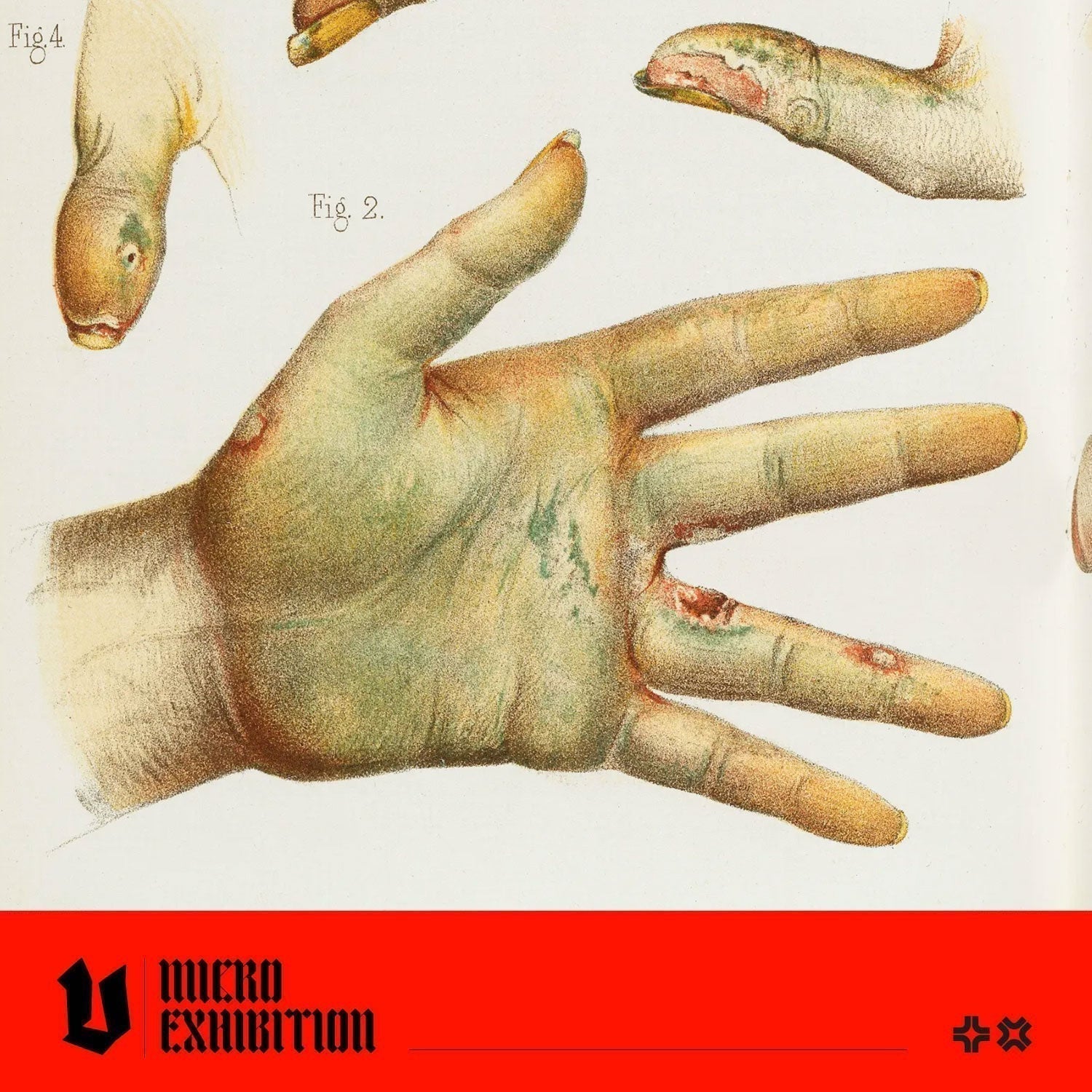Poisoned Pages: The Lethal Legacy of 19th-Century Book Design
In the quiet corners of libraries, rare book rooms, and private collections, a few volumes hide a strange and unsettling secret. These innocent-looking, often beautiful books were bound with pigments so toxic they still pose a risk more than a century later. Today, we're diving into the eerie history of arsenic-laced books and learning about the modern-day conservators trying to track them down. Let's go!

Arsenic bookbindings via The Poison Book Project
How Arsenic Ended Up in 19th-Century Books
A poisoned book sounds like something out of a gothic novel, but it's real, and can harm you just by holding it. It seems strange to us in today's era that this could this be a deliberate manufacturing choice, but in the 19th century, arsenic was everywhere: in cosmetics, paint on children's toys, artificial flowers, wallpaper, postage stamps, clothing dye, and much more - if it needed colour, there was a good chance arsenic was involved.
One pigment in particular, known as emerald green (also called Paris green or copper acetoarsenite), was prized for its rich, brilliant hue. Publishers used it to dye bookcloths in a vivid green that stood out on the shelf. It was fashionable, cheap, and popular—a commercially irresistible combination. Unfortunately, it was also highly toxic.
 ‘Two skeletons dressed as lady and gentleman.’ Etching, 1862. From Punch, or the London Charivari.
‘Two skeletons dressed as lady and gentleman.’ Etching, 1862. From Punch, or the London Charivari.
People knew arsenic was dangerous; it was, after all, a common fly poison and rodent killer. Medical journals warned against exposure to it, and German chemist Leopold Gmelin raised public concerns about its domestic use as early as 1815, but the more insidious, long-term effects of daily or repeated exposure weren't widely understood or acknowledged in the UK or North America (there were greater protections in Europe). Factory workers who regularly handled arsenic-based dyes often developed respiratory issues, skin conditions, and worse.
But publishers largely ignored the risks, focusing instead on cost and appearance. The result? Thousands of poisonous, emerald-green books circulated for years around North America and the UK.

Illustration from an 1859 French medical journal showing typical damage caused to hands by exposure to arsenical dyes.
What Is The Poison Book Project?
The Poison Book project began in a serendipitous way. Dr Melissa Tedone, a conservator at the Winterthur Museum and Associate Director at the University of Delaware, was perparing a 1857 copy of Rustic Adornments for Homes of Taste for an exhibition. At the same time, she happened to be reading another book about arsenic in 19th-century wallpaper. While examining Rustic Adornments for Homes of Taste, she noticed that its green cloth cover was shedding tiny flakes. Curious, she sent a sample to the lab. Dr Rosie Grayburn ran tests using X-ray fluorescence, which confirmed the presence of copper and arsenic. The book's cover had been dyed with emerald green. That discovery led to the creation of The Poison Book Project, a collaboration between Winterthur and the University of Delaware that now helps libraries and archives worldwide identify and safely handle arsenic-bound books.
As of 2024, the project has identified over 313 arsenic-containing volumes. Some major institutions, like the Bibliothèque nationale de France and Bielefeld University, have quarantined thousands of green-bound books while they await testing. The testing itself is done using tools like XRF, Raman spectroscopy, and handheld light-reflectance devices developed at the University of St Andrews.
Books confirmed to contain arsenic are bagged in archival zip-tops or housed in specially made boxes. Staff wear nitrile gloves when handling them, avoid skin contact, and clean surfaces thoroughly afterwards. Catalogue entries are updated with safety warnings to ensure no one accidentally mishandles them in future.

Rustic Adornments for Homes of Taste (London 1857) in emerald green bookcloth. Courtesy of Winterthur Museum, Garden & Library.
Do You Own a Poison Book?
If you've got a 19th-century green-cloth book at home, particularly one from the 1840s to 1860s, it might be worth taking a closer look. The Poison Book Project has created a visual guide to help collectors and librarians assess their books: check the flowchart here.
Interested in Learning More About Poisoned Artefacts?
Bitten by Witch Fever (2016)
This book by Lucinda Hawksley served as an indispensable source of inspiration for this article. Although we are unsure if this is the same book Dr Tedone mentions reading that serendipitously inspired the Poison Book Project, this title has helped us gain valuable insights into the cultural context of the use of arsenic during the Victorian era. Also, it includes hundreds of beautiful patterned swatches of period wallpaper for reference (arsenic not included). It's a fascinating addition to the library at Vault Editions HQ. Grab your copy here.
Shadows from the Walls of Death (1874)
Compiled by Michigan physician Dr Robert Kedzie, this brilliantly titled volume contains 86 wallpaper samples, printed with arsenic-laced pigments. He created it as a warning about the hidden dangers of interior design and an accompaniment to his theory that people confined to bed rest deteriorated due to the arsenic wallpaper in their room. Only five of the original hundred copies still exist, all owned by American universities and handled with extreme care.

Wallpaper from Shadows from the Walls of Death (1874)




